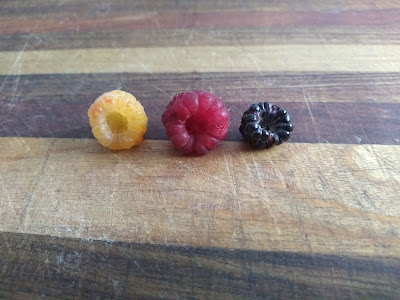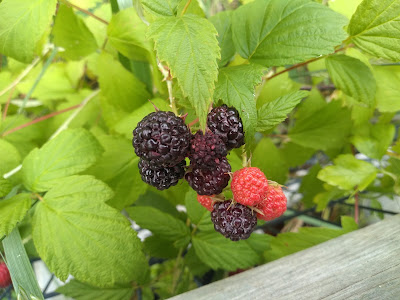I have been growing water celery (Oenanthe javanica) for a long time. I have had it since at least 2015, I possibly even grew it for a year or two prior to that.
I grow the colourful and attractive variegated flamingo or rainbow form. It has a bunch of common names including: water parsley, Java waterdropwort, Japanese parsley, Chinese celery, rainbow water parsley. This is a very vigorous, and very simple to grow perennial vegetable.
Interestingly, the native range of this perennial vegetable is a whole bunch of countries, including Australia.
 |
| Variegated water celery |
Water celery has amazingly strong growth, while it seems to prefer having its roots submerged and its leaves out of the water it can grow in deeper water as long as its leaves can reach the surface, or it can grow on 'dry land' like a regular vegetable.
It handles hard frosts well, and tolerates extremely high temperatures if it has water. Full sun and part shade both seem to work well for this plant.
When water celery is grown in floating raft aquaponics it can be used to effectively filter the water. I trialed it with my goldfish barrelponics and it worked well. It can be used to filter grey water, it is good at removing pollutants due to its fast growth rate.
Above all this, water celery is edible. It tastes like mild celery, and loses much of the taste when cooked for too long so is best added towards the end of cooking.
I am not a huge fan of celery, so tend not to eat much of it myself. Chickens and guinea pigs and other animals enjoy eating water celery raw. The times of year that we don't have much grass I feed handfulls of water celery to our animals. While water celery is great in the compost, I prefer to feed it to the chickens as I think that is a better use.
For years I have grown the rather pretty variegated form, and it is a very vigorous plant. I have heard when planted next to a pond it tends to take over somewhat.
I am told that the pure green form is far more vigorous. I originally wanted the green variety, but couldn't find it. A few places sell this green one online, but I can't justify the price when I already grow the variegated one. I had hoped mine would throw a non-variegated runner, but that hasn't happened yet.
 |
| Variegated water celery growing out of its pot |
My plants sometimes flower. They start to set seed, then each year something happens and I don't get around to collecting any seed to grow. Sometimes it gets too dry and the flowers are scorched, or something eats off the flower heads, or I just forget about it and have no idea what happened to the seed.
The last time my water celery plants flowered, I forgot about them and they were largely covered by fallen leaves. Recently I was clearing up that part of the garden and noticed a plant. It looks like a tiny water celery seedling. It appears to be entirely green. I was lucky that I even saw this little one.
This little plant is most likely seed grown.
 |
| Dark green water celery |
I carefully dug up this little plant, put it in a small pot, and moved it somewhere safe. Since then it has grown very quickly and started to divide. Hopefully it is even more vigorous than its variegated parent.
The parent has pink stems, with light green leaves edged in white and pink or purple. The colouration becomes more vivid in cooler weather. It really is rather pretty.
This little plant is darker green, with dark green stems and dark green leaves. Presumably this darker green is from increased chlorophyll. Extra chlorophyll means it should have a massive advantage when it comes to growth rate, and it should be more vigorous than its variegated parent.
I can hardly wait to see what it can do.
 |
| Non-variegated water celery |
From here I hope this plant grows well, and in time I hope to divide it. Given how much it has grown in a week I don't think this will take very long. I haven't tasted this plant yet, hopefully it tastes a little stronger than the variegated one.
I will try to post an update on this plant in a few months once it has had some time to do some growing and I have had a chance to eat a little of it.
 |
| Green water celery |
When I have divided this plant enough I would like to try some as the filter for my goldfish barrelponics as I think it may perform well there. Vietnamese coriander grows exceptionally well in my barrelponics over the warmer months, but stops growing over winter.
I have a feeling the green water celery may grow well over the cooler months, and a combination of Vietnamese coriander and green water celery should be an excellent water filter.
 |
| Green Water Celery |
 |
| Green water celery has grown and divided |
I currently sell bare rooted plants of the variegated rainbow water celery, I have some perennial vegetables for sale and other interesting plants on my for sale page. At some stage in the future I may also have some of the green version for sale. I post perennial vegetable throughout Australia, but not to WA or Tasmania at this stage.





















































